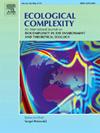Interactions with pollinators underlie the structure and function of plant communities. Network analysis is a valuable tool for studying plant-pollinator interactions, but these networks are most frequently built by aggregating interactions at the species level. Interactions are between individuals and an advantage of individual-based networks is the ability to integrate inter-individual variation in traits and environmental context within complex ecological networks. We studied the influence of inter-individual variation on pollinator sharing among foundation shrubs and cactus in a desert ecosystem using plant individual-based pollinator visitation networks. We hypothesized that the traits that alter attractiveness of plants to pollinators will also influence an individual plant's role within the visitation network. Foundation plants growing with higher densities of nearby blooming shrubs had higher pollinator visitation rates and had greater access to the conspecific mating pool, suggesting widespread and diffuse pollination facilitation within this community. Further, shrub density influenced the role of betweenness centrality and the effective number of partners (eH). Floral display size also influenced the effective number of interaction partners but did not directly influence the centrality measures for individual plants or other measures of network structure despite increasing visitation rates. The individual-based visitation networks were significantly modular and module membership was predicted by species identity and pollinator visitation rates. Ecological and individual context mediate the outcome of pollinator-mediated interactions and are fundamental drivers of whole community structure. This study shows that the density of immediate neighbours can influence the overall structure of plant-pollinator interaction networks. Exploring the contribution of intraspecific variation to community interaction networks will improve our understanding of drivers of community-level ecological dynamics.


